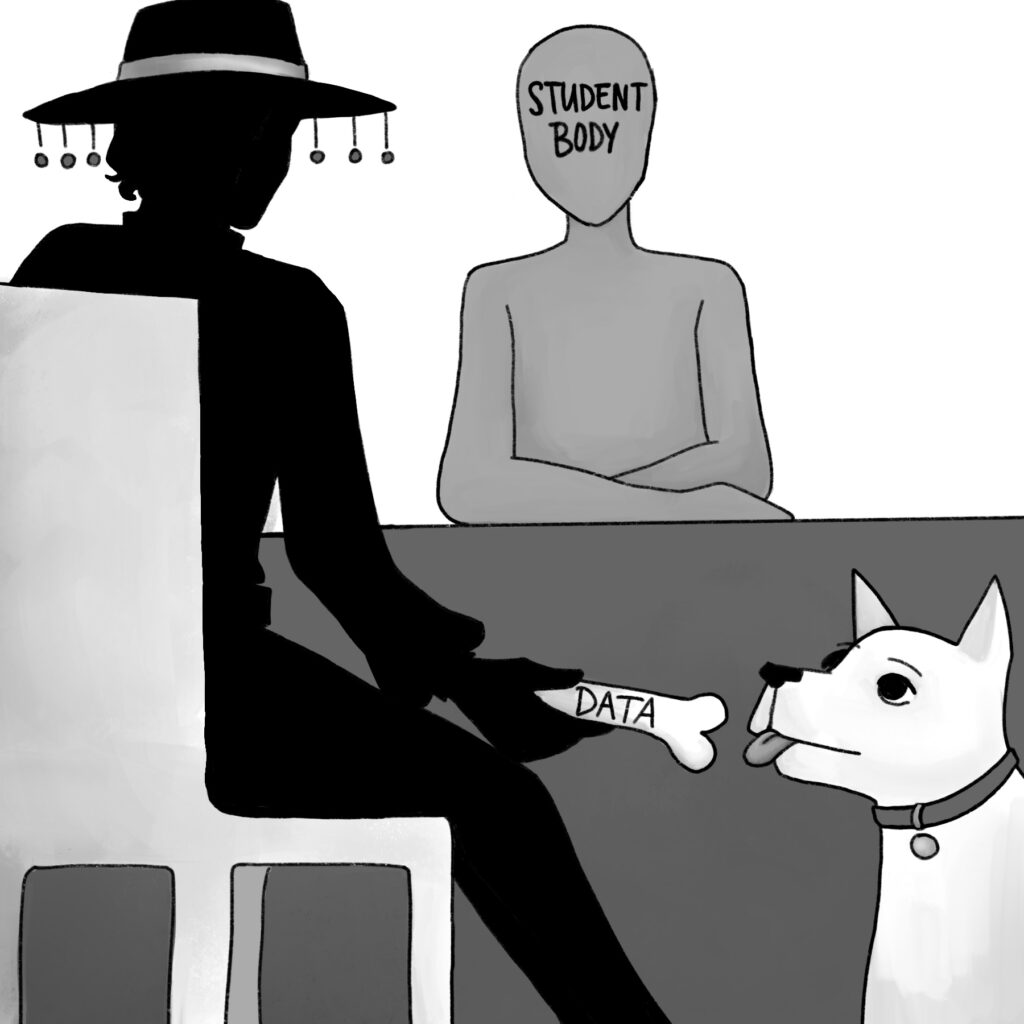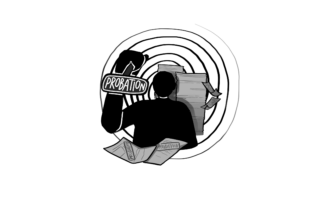
Alexa Sterry
After a rise in hate speech incidents, the San Mateo Union High School District implemented the Bark alert system in spring of 2020. Principal Valerie Arbizu described the application as a “Google sniffer” — utilizing artificial intelligence to scan through data in students’ G-Suites (Google Docs, Slides, Photos, Gmail and more) for certain keywords associated with harmful content. According to the SMUHSD website, the algorithm identifies mentions of “cyberbullying, suicidal ideation, sexual predators, threats of violence, and more” and immediately notifies the District’s Student Services. After verifying the contents of the alert, the district passes it off to the administrative team to be addressed at the involved student’s school.
When asked about the privacy issues surrounding tracking student data, both Arbizu and Director of Student Services Don Scatena compared students to the workforce. Employers are legally able to surveil employees’ activity when they use corporate accounts. However, the comparison fails on one key point: awareness. The editors of the Aragon Outlook believe that Aragon, as well as the SMUHSD needs to increase transparency regarding their use of Bark.
Awareness at Aragon surrounding Bark is concerningly low. Arbizu reported that about 25% of Bark alerts flag content students thought was private, such as diary entries written on Google Docs. Unaware of the extent of the district’s monitoring, students often utilize their SMUHSD Google accounts to express personal emotions or connect with friends.
“Arbizu reported that about 25% of Bark alerts flag content students thought was private, such as diary entries written on Google Docs.”
It is the district’s responsibility to better educate students about how Bark works. When Bark was first implemented, former superintendent Kevin Skelly sent a memo on March 2, 2020 to notify families that student activities were going to be monitored; however, the memo failed to mention the methodology or extent of the surveillance.
Even more concerning, Bark is not mentioned anywhere on the Aragon website. Bark is also not mentioned in the Responsible Use Policy or the Student Technology Acceptable Use Policy, the documents students and parents sign that outline expectations for appropriate use of school devices and online services.
Beyond brief overviews of Bark that insufficiently describe the methodology on the district and Mills High School websites, and a singular slide during grade-level assembly presentations at the beginning of the year, Aragon students and families are left uninformed about the service and its capabilities. While Aragon students obviously cannot expect complete privacy, they do have a right to informed consent.
This follows a broader trend of administrative failures to fully inform students and families of potential infringements on privacy policies. The district uses Anonymous Alerts, a system for students and parents to report “suspicious activity, bullying or other student related issues to a school administrator(s).” However, Scatena explained that despite the name, these alerts are in fact not anonymous.
“Scatena explained that despite the name, these alerts are in fact not anonymous.”
“If it’s an alert made to harm somebody, those things can be tracked if needed,” Scatena said.
Beyond that, when students are using the district Wi-Fi (a Cisco-Meraki system), the district is able to see the name of the device, IP and URLs and APIs of every website they open.
However, unlike Bark’s active alert system, the Wi-Fi data is only viewed by the district under necessary circumstances if the district chooses to parse through it, like during investigations. For example, Wi-Fi tracking helped catch the perpetrator of a hate crime on a SMUHSD campus in the past.
The systems the district implements are meant to keep students safe. Since its implementation in 2020, Bark has analyzed over 129.2 million student activities and flagged 2,200 alerts to review districtwide. Within this, Bark has prevented two suicides and stopped one student from bringing a weapon onto campus, according to Scatena.
But the ultimate goal should not be to catch students in the act, but instead to encourage them to seek help and support when they need it. It is imperative that students and staff collaborate in order to foster open communication, which can only be done if students are awarded basic transparency regarding their privacy rights.



